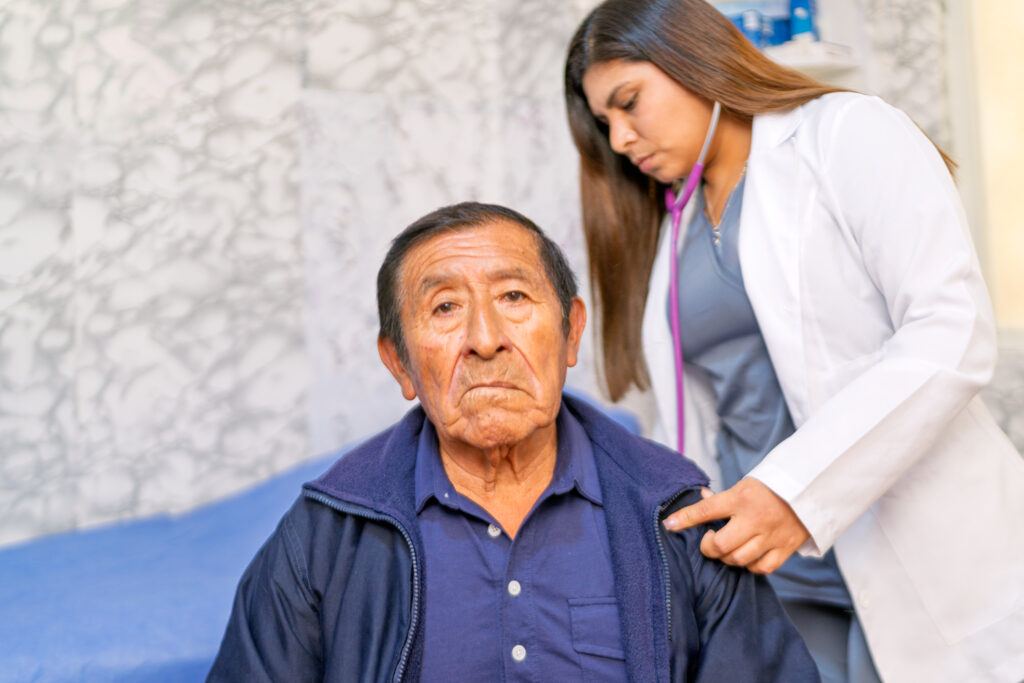Leading case management during COVID-19.
Towards the end of the most recent COVID-19 surge, an employee working from home mentioned how isolated they felt, and how lucky I was to go into work every day. That sat with me for a minute before I responded, while also acknowledging how difficult this past year has been for everyone.
My response was this: I have worked in the hospital every day since the pandemic began, which has also felt isolating, but in a vastly different way. The hospitals have been on lockdown. We have been locked in, and the rest of the world has been locked out. We have cared for the sick and the dying. We have held their hands, listened to their stories, and known that the very sickest would likely die alone. Nurses would not be at most bedsides while someone passed, because these nurses were in other rooms working to save those still fighting to survive.
The case management teams have not been excluded from the isolation and heartache. Inpatient case managers have remained in the hospitals while the outpatient case managers, utilization review specialists, and other associated teams have worked from home. Several emergency room social work case managers, who have worked in the EDs during the pandemic, have chosen to move out of their homes during the COVID surges to be away from their spouses and children, in order to protect their families. I have coworkers who have not travelled to visit their elderly parents due to their own concerns and family members’ concerns that they have a higher risk of contracting the virus due to their roles in the hospital. There were so many unknowns about transmission and preventing the spread that healthcare workers and everyone else were doing all that they could to protect their patients and their families.
A difficult adjustment for case managers has been the change in process to no longer go into patients’ rooms to complete initial assessments and provide care management services. Many hospitals required the inpatient case manager to complete most of their work with patients via phone. Units with COVID patients barred all staff from entering the rooms to decrease the use of personal protective equipment (PPE), which has been in short supply throughout the pandemic. Other units have also reduced entry into rooms, as patients may initially test as negative; however, under further treatment, they are determined to be positive, or their risk is so high for contracting the virus that units could just not take the risk. Therefore, regardless of COVID status, many patient rooms became limited to only direct caregivers.
This has been particularly difficult for our palliative and medical teams during end-of-life conversations – not only because of the sheer volume of those dying during our surges, but families that used to be present during this difficult time are no longer allowed inside the rooms. Unable to understand the depths of illness due to the inability to physically see or touch their loved ones, they are forced to make disconnected decisions.
More recently, limited numbers of family members have been allowed into the hospital at the end of life; however, requirements demand they stay six feet from the door. So many patients were dying alone, with an iPad for family to be present. The effects of this on the medical team has been life-changing and unimaginable, as they must continue to come to work and provide needed care for their isolated patients, knowing that may be the only interaction or human contact their patient is getting while inside the hospital walls.
What has not been visible outside of the hospital is the additional isolation that has occurred to the healthcare team while at work. The cafeterias have yellow caution tape around every other table to prevent team members from sitting too near each other while eating their meals and taking breaks.
Areas that had previously been used for waiting rooms now have small tables spread out so that staff can eat alone while still being near their unit, as lunch in the nursing break rooms is no longer permitted. While all of this may be necessary to slow transmission, it creates additional feelings of isolation during a time when we need each other’s support more than ever. Our teams need to be able to laugh and cry and support each other, and the social isolation has made that seem more difficult than ever before.
As leaders in the hospital, we have worked tirelessly to find ways to make the staff feel honored and supported. Hospital systems have created support hotlines and offered counseling and continuous HR involvement to assess employee needs. My hospital system has also held socially distanced events to bring smiles and joy to patients and team members. An example is a parade during the holidays throughout every department in the hospital, consisting of floats made by each department. Staff from the departments decorated them and pushed them through the units, waving and handing out small gifts associated with their themes. Patients could see the floats pass by their rooms, and were greeted with waves and cheer. Patients in the hospital over the holidays had no interaction with family due to COVID, and that parade in particular served as a celebration and human connection.
Understanding the marathon we are in, our teams can still look forward to an opportunity of connection, discussion, and compassion for one another, as we have battled an unexpected war in healthcare. With the continued hope for an increasing number of vaccinated individuals on the horizon and the subsequent decreasing COVID hospitalizations, we can start to breathe again. As leaders, we must remember the secondary trauma experienced by our staff and ourselves, and ensure that we assess for supportive services, engage in needed resources, and remember that we are not alone.






















